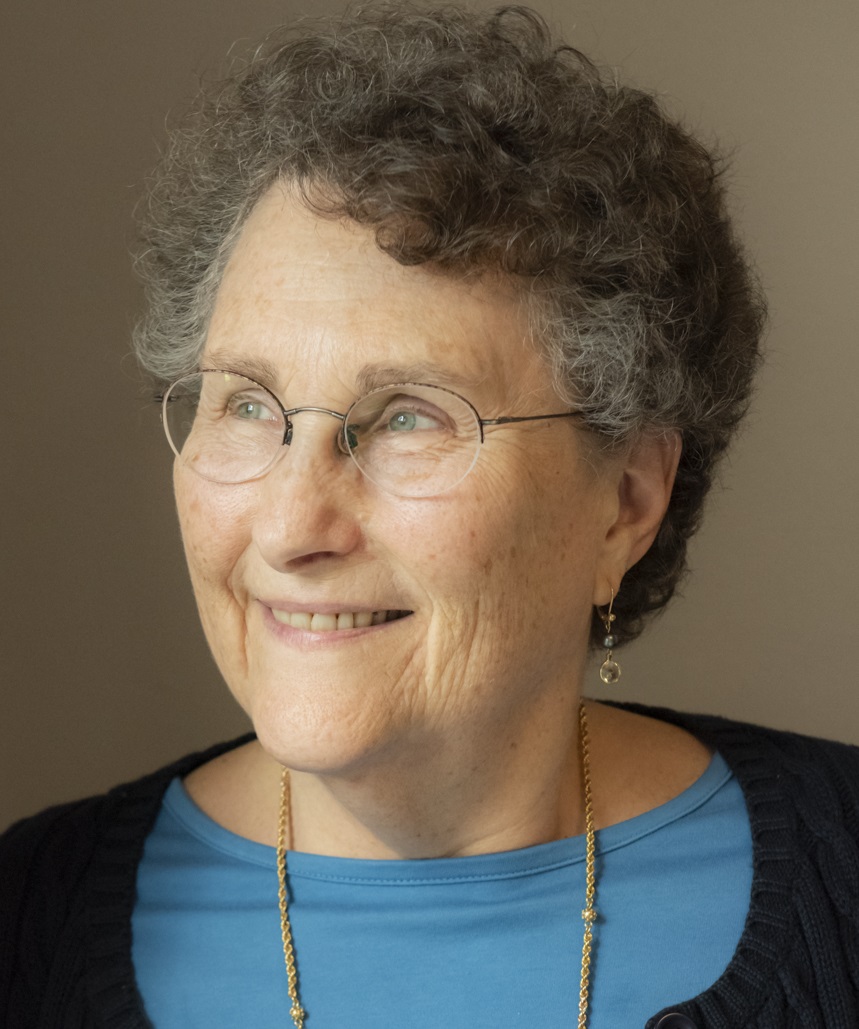Christian meditation and prayer
Lynne Baab • Tuesday August 15 2023

I’m in my late 30s, and I’m talking with a Christian man I know slightly. He’s telling me about his pattern of meditation. He says he begins by emptying his mind of all his concerns so he can focus on a sacred word or verse from the Bible. I argue with him a little. I tell him I can’t empty my mind just like that. Instead, when I try to engage in Christian meditation, I try to identify the things on my mind and give them over to God, perhaps by using some imagery like putting them in Jesus’s hands or laying them at the feet of the cross. He doesn’t like my pattern because he thinks it puts too much focus on those distracting thoughts and worries. I don’t like his pattern because it seemed completely impossible for me to do. Plus, how can it ever be wrong to turn to God with the things on our minds?
Back in my early 20s, I remember being taught that Hindu and Buddhist meditation involves emptying the mind, while Christian meditation involves deliberately focusing our attention on God. As Adele Ahlberg Calhoun describes it, “Meditation is a long, ardent gaze at God, his work and his Word. Slowing down and giving one’s undivided attention to God lies at the core of Christian meditation.” [1] I love her use of the word “ardent,” which implies to me some degree of passion. Christian meditation isn’t about impassive emptying the mind, but instead involves a passionate and loving focus on the God who calls us “Beloved.”
I want to make four points about the connections between prayer and Christian meditation. See if one these points might be helpful for you.
1. I love the word “ponder.” Perhaps meditating on God sounds too intimidating, but hey, we ponder so many practical things about our lives. Why not spend some time pondering God, God’s work, Jesus, the Holy Spirit, stories in the Bible, or God’s handiwork in nature? Maybe pondering God and the things of God happens for a minute or two here and there, and we can become more conscious of the value of such pondering, and later it can grow into a longer period of time. Or maybe our moments of pondering God are always brief. My next three points show how intimately connected prayer and meditation are, so I want to affirm that any kind of pondering God can help us pray more easily.
2. Prayer can take many forms in Christian meditation. We might start with prayer, as I do when I dump my concerns and worries into Jesus’s care. We might end with prayer, as we receive an insight about God and turn to God with a smile, a word of thanks or praise. We might bring a concern to God that we know God can take care of because we saw God’s faithfulness and love as we pondered God’s character. We might move back and forth between prayer and pondering something about God. Prayers before, during, or after meditation can be any kind of prayer: praise, thanks, confession, intercession, or lament. If we engage in intercessory prayer, we might pray for ourselves or others. If we experience meditation in a group, we might alone pray while meditating or afterwards with the group.
As I have said elsewhere in this blog, I view prayer as direct address to God, listening to God speak to us, or resting in God’s presence. Thinking about God, to me, isn’t prayer, even though it is a wonderful thing. That brings me to my third point.
3. God can speak to us in a variety of ways during Christian meditation. When we are pondering a passage of the Bible or simply thinking about the triune God and God’s characteristics and actions, the Holy Spirit might whisper in our ears something about God that is new or that we haven’t thought about for a while. If listening to God is a form of prayer, and if the Holy Spirit speaks to us off and on during meditation, then there may be many moments of listening prayer during a time of meditation.
Calhoun recommends meditating on nature as well as the Bible. She suggests opening ourselves to the beauty of nature so we can perceive more about the God of beauty who created the physical world and our bodies and souls. She writes, “Let the Spirit move you to praise. Meditation on creation is meant to lead us into the arms of God our Creator.” When we experience a back-and-forth movement between pondering the beauty of creation and then moving into praise or any other kind of prayer, we see the close connection between Christian meditation and prayer.
4. Mindfulness meditation can draw us into prayer. Mindfulness meditation is one of the most common forms of meditation in our time, both inside and outside the Christian faith community. In mindfulness meditation, we try to settle ourselves into this particular moment, laying aside our judgments and analytical thoughts about the various things on our minds. I have experienced mindfulness meditation as a helpful practice in several ways. It helps us slow down and let go of worries. It helps us appreciate God’s gift of breath and life in this moment. And it can help us see where God is present, here and now. All of these help us move almost seamlessly into thankfulness prayers.
Lovely and loving God, you are beautiful beyond description, too marvelous for words. Help us take joy in pondering who you are and what you have done. Give us moments of reflecting on the unique presence and roles of each person of the Trinity. Open our eyes so we can see you in nature and gaze ardently at you, our Creator. Then, as we see you more clearly, help us turn to you with our words and emotions.
(Next week: Journaling and prayer. This is the 14th post in a series on spiritual practices and prayer. If you’d like to learn more about spiritual practices, the first post of the series is here. That post also has a list of all the posts in the series. Illustration by Dave Baab. If you’d like to receive an email when I post on this blog, sign up below under “subscribe.”)
Last month I had an article in Refresh Journal of Contemplative Spirituality about how to nurture a contemplative stance.
Some related posts:
- Distractions in silent prayer (this applies to meditation, too)
- Hearing God’s voice
- Nature speaks about God: The miracle of trees
[1] The section on meditation in the Spiritual Disciplines Handbook: Practices that Transform Us is pages 191-193. (Adele Alhberg Calhoun, InterVarsity Press, 2015 edition.)
Next post »« Previous post
Subscribe to updates
To receive an email alert when a new post is published, simply enter your email address below.

Lynne M. Baab, Ph.D., is a teacher and writer. She has written numerous books, Bible study guides, and articles for magazines and journals. Lynne is passionate about prayer and other ways to draw near to God, and her writing conveys encouragement for readers to be their authentic selves before God. She encourages experimentation and lightness in Christians spiritual practices. Read more »
Lynne is pleased to announce the release of her book on grief and gratitude, designed to help people grieving from anything, including the pandemic, while also desiring to notice God's good gifts. Two Hands: Grief and Gratitude in the Christian Life is available in paperback, audiobook, and for kindle. Lynne's 2018 book is Nurturing Hope: Christian Pastoral Care for the Twenty-First Century, and her best-selling book is Sabbath-Keeping: Finding Freedom in the Rhythms of Rest (now available as an audiobook as well as paperback and kindle). You can see her many other book titles here, along with her Bible study guides.
Lynne recently spoke about empathy and also about bringing spiritual practices to life.
Lynne was interviewed recently for the podcast "As the Crow Flies". The first episode focuses on why listening matters and the second one on listening skills.
Here are two talks Lynne gave on listening (recorded in audio form on YouTube): Listening for Mission and Ministry and Why Listening Matters for Mission and Ministry.
"Lynne's writing is beautiful. Her tone has such a note of hope and excitement about growth. It is gentle and affirming."
— a reader
"Dear Dr. Baab, You changed my life. It is only through God’s gift of the sabbath that I feel in my heart and soul that God loves me apart from anything I do."
— a reader of Sabbath Keeping
Subscribe
To receive an email alert when a new post is published, simply enter your email address below.
Featured posts
- Drawing Near to God with the Heart: first post of a series »
- Quotations I love: Henri Nouwen on being beloved »
- Worshipping God the Creator: the first post of a series »
- Sabbath Keeping a decade later: the first post of a series »
- Benedictine spirituality: the first post of a series »
- Celtic Christianity: the first post of a series »
- Holy Listening »
- A Cat with a Noble Character »
- Welcome to my website »
Tags
Archive
- April 2024 (4)
-
March 2024 (5)
- Friendship, loneliness, and prayer: Praying about distractions from empathy
- Friendship, loneliness, and prayer: Praying to keep empathy flowing
- Friendship, loneliness, and prayer: Everyday initiative
- Friendship, loneliness, and prayer: Praying for guidance for ending conversations
- Friendship, loneliness, and prayer: Reflecting on the series
- February 2024 (4)
- January 2024 (2)
-
December 2023 (6)
- Friendship, loneliness, and prayer: Initiating
- Friendship, loneliness, and prayer: Praying about listening roadblocks
- Friendship, loneliness, and prayer: Praying to love the poverty in our friends
- Friendship, loneliness, and prayer: Praying for “holy curiosity”
- Friendship, loneliness, and prayer: Praying for “holy listening”
- Friendship, loneliness, and prayer: Praying to give affection extravagantly
- November 2023 (4)
-
October 2023 (5)
- Friendship, loneliness and prayer: A listening skill with two purposes
- Friendship, loneliness, and prayer: Saying “thank you” to friends
- Friendship, loneliness, and prayer: One more way reflecting helps us
- Friendship, loneliness, and prayer: Lessons from two periods of loneliness
- Friendship, loneliness, and prayer: Types of reflecting, a listening skill
- September 2023 (4)
- August 2023 (4)
- July 2023 (5)
- June 2023 (3)
- May 2023 (6)
- April 2023 (4)
- March 2023 (4)
- February 2023 (4)
- January 2023 (4)
- December 2022 (5)
- November 2022 (1)
- October 2022 (5)
- September 2022 (5)
-
August 2022 (6)
- Draw near: Confessing sin without wallowing
- Draw near: A favorite prayer about peace, freedom, and much more
- Drawing near with Desmond Tutu: God’s love is the foundation for prayer
- Draw near: Worshipping God with Desmond Tutu
- Draw near: Yearning, beseeching and beholding with Desmond Tutu
- Draw near: Praising God with Desmond Tutu
- July 2022 (2)
- June 2022 (6)
- May 2022 (5)
- April 2022 (6)
- March 2022 (5)
- February 2022 (4)
- January 2022 (3)
- December 2021 (5)
- November 2021 (4)
- October 2021 (5)
- September 2021 (4)
- August 2021 (4)
- July 2021 (4)
- June 2021 (4)
- May 2021 (4)
- April 2021 (5)
- March 2021 (4)
- February 2021 (4)
- January 2021 (4)
- December 2020 (5)
- November 2020 (3)
- October 2020 (5)
- September 2020 (4)
- August 2020 (4)
- July 2020 (5)
- June 2020 (4)
-
May 2020 (4)
- Spiritual diary of sheltering in place: The lifeline of separating thoughts from feelings
- Spiritual diary of sheltering in place: The lifeline of welcoming prayer
- Spiritual diary of sheltering in place: a kite string as a lifeline
- Spiritual diary of sheltering in place: The lifeline of God’s distant future
-
April 2020 (7)
- Spiritual diary of self-isolation: the lifeline of God’s constancy
- Spiritual diary of sheltering in place: The lifeline of accepting my place as a clay jar
- Spiritual diary of sheltering in place: the lifeline of memories
- Spiritual diary of sheltering in place: the lifeline of “Good” in “Good Friday”
- Spiritual diary of sheltering in place: The lifeline of “easier does not mean easy”
- Spiritual diary of sheltering in place: The lifeline of nature
- Spiritual diary of sheltering in place: the lifeline of God’s voice through the Bible
-
March 2020 (7)
- Important anniversaries in 2020: The first Earth Day in 1970
- Important anniversaries in 2020: Florence Nightingale was born in 1820
- Spiritual diary of self-isolation: Weeks 1 and 2
- Spiritual diary of self-isolation: God's grace as a lifeline
- Spiritual diary of self-isolation: The lifeline of limits on thoughts
- Spiritual diary of self-isolation: Wrestling with God for a blessing
- Spiritual diary of self-isolation: responding to terror by listening to Jesus voice
- February 2020 (4)
- January 2020 (5)
- December 2019 (4)
- November 2019 (4)
- October 2019 (5)
- September 2019 (4)
- August 2019 (5)
- July 2019 (4)
- June 2019 (4)
- May 2019 (5)
- April 2019 (4)
- March 2019 (4)
- February 2019 (4)
-
January 2019 (5)
- Nurturing friendships in a cellphone world: Jesus as Friend
- Nurturing friendships in a cellphone world: Friendship with Christ and friendship with others
- Nurturing friendships in a cellphone world: Who is my neighbor?
- Nurturing friendships in a cellphone world: Friendship as action
- Nurturing friendships in a cellphone world: Hymns that describe friendship with God
- December 2018 (3)
-
November 2018 (5)
- Connections between the Bible and prayer: Sensory prayer in Revelation
- First post in a new series: Nurturing friendships in a cellphone world
- Nurturing friendships in a cellphone world: Strong opinions and responses
- Nurturing friendships in a cellphone world: My conversation partners about friendship
- Nurturing friendships in a cellphone world: Two views about communication technologies
- October 2018 (4)
- September 2018 (4)
-
August 2018 (5)
- Providing Christian Care in Our Time
- Providing Christian care in our time: Seven trends in pastoral care today
- Providing Christian Care in Our Time: Skills for Pastoral Care
- Providing Christian care: The importance of spiritual practices
- First post in a new series: Connections between the Bible and prayer
- July 2018 (4)
- June 2018 (4)
- May 2018 (5)
- April 2018 (4)
- March 2018 (5)
- February 2018 (4)
- January 2018 (4)
- December 2017 (5)
- November 2017 (4)
- October 2017 (4)
- September 2017 (5)
- August 2017 (4)
- July 2017 (4)
- June 2017 (4)
-
May 2017 (5)
- My new spiritual practice: Separating thoughts from feelings
- My new spiritual practice: Feeling the feelings
- My new spiritual practice: Coping with feelings that want to dominate
- My new spiritual practice: Dealing with “demonic” thoughts
- My new spiritual practice: Is self-compassion really appropriate for Christians?
- April 2017 (4)
- March 2017 (5)
- February 2017 (4)
- January 2017 (4)
- December 2016 (5)
- November 2016 (4)
- October 2016 (4)
- September 2016 (5)
- August 2016 (4)
- July 2016 (4)
- June 2016 (4)
- May 2016 (5)
- April 2016 (4)
- March 2016 (5)
- February 2016 (4)
- January 2016 (4)
- December 2015 (4)
- November 2015 (4)
- October 2015 (5)
- September 2015 (4)
- August 2015 (4)
- July 2015 (4)
- June 2015 (4)
- May 2015 (4)
- April 2015 (6)
- March 2015 (4)
- February 2015 (4)
- January 2015 (4)
- December 2014 (5)
- November 2014 (4)
- October 2014 (4)
- September 2014 (4)
- August 2014 (5)
- July 2014 (4)
- June 2014 (7)





















